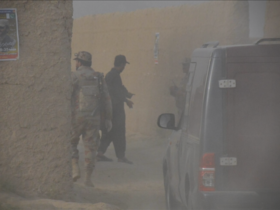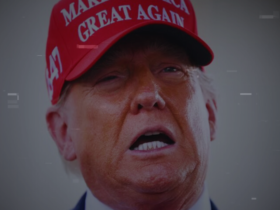The Trump Iran conflict escalated dramatically when the United States launched precision strikes against three critical Iranian nuclear facilities. Specifically, the U.S. military targeted Fordo, Natanz, and Isfahan in a coordinated attack that Pentagon officials report caused “severe damage” to these installations. These sites, particularly Fordo, represent key components of Iran’s nuclear program, with the Fordo facility buried almost 300 feet beneath a mountain and protected by significant air defenses.
This donald trump iran conflict marks a significant intensification in hostilities that have persisted for decades, with Iran reportedly waging “a war of terror against the United States for 46 years”. The trump iran war operation involved a meticulously planned assault using B-2 bombers carrying 30,000-pound “bunker-buster” bombs (GBU-57 Massive Ordnance Penetrators) and submarine-launched Tomahawk cruise missiles. Furthermore, the trump on israel iran conflict has broader implications, as the U.S. president has characterized this as “Israel’s war,” while acknowledging Israel as “one of our strongest allies” that is “disarming Iran for the good of the world”. Consequently, global attention now focuses on Iran’s potential response, international diplomatic reactions, and emerging peace initiatives amid this escalating situation.
Trump’s Iran Strike: What Happened and Why
In early May 2024, the Trump Iran conflict entered a new phase as U.S. forces executed strategic strikes against three of Iran’s most critical nuclear facilities. This decisive military action marked a significant escalation in tensions between the two nations.
The targets: Fordo, Natanz, and Isfahan
The Pentagon confirmed that American forces targeted three key installations in Iran’s nuclear infrastructure. Fordo, located near Qom, represents one of Iran’s most fortified nuclear sites, buried approximately 300 feet beneath a mountain and protected by substantial air defenses. This uranium enrichment facility has long been a concern for Western intelligence agencies due to its hardened protection against conventional airstrikes.
Natanz, situated in central Iran, houses the country’s primary uranium enrichment complex with thousands of centrifuges. This facility has been targeted previously through cyber attacks and sabotage operations. Before the strike, intelligence reports indicated Natanz had significantly expanded its uranium enrichment capabilities beyond the limits established in the 2015 nuclear agreement.
The third target, Isfahan, contains multiple nuclear research sites and uranium conversion facilities essential to Iran’s nuclear program. This complex plays a vital role in transforming uranium into forms usable for enrichment processes.
Trump’s justification for the attack
President Trump cited several reasons for authorizing the strike. First, he pointed to Iran’s alleged acceleration of nuclear weapons development, stating the country had moved dangerously close to developing nuclear capabilities. Additionally, he referenced what he described as “a war of terror against the United States for 46 years” as justification for the military action.
In an address from the Oval Office, Trump emphasized that Iran had consistently violated international agreements regarding its nuclear program. Moreover, he characterized the strike as preventative, arguing that Iran’s nuclear ambitions posed an existential threat not only to American interests but to global security.
Intelligence reports indicated Iran had recently achieved uranium enrichment levels approaching 60% purity—significantly beyond what’s needed for civilian nuclear power and moving closer to weapons-grade material. This development served as a primary catalyst for the decision to strike.
Timing and coordination with Israel
The operation involved meticulous planning with Israeli military and intelligence services. In fact, Trump explicitly framed the action as part of “Israel’s war,” acknowledging Israel as “one of our strongest allies” that is “disarming Iran for the good of the world.”
The timing of the strike coincided with heightened regional tensions following several Iranian-backed attacks against Israeli targets. Intelligence sources revealed that the operation had been planned for months, awaiting optimal conditions for maximum effectiveness against hardened targets.
B-2 stealth bombers executed the primary assault, deploying 30,000-pound “bunker-buster” bombs (GBU-57 Massive Ordnance Penetrators) specifically designed to penetrate reinforced underground facilities like Fordo. Simultaneously, U.S. submarines in the Persian Gulf launched Tomahawk cruise missiles against secondary targets, creating a coordinated multi-vector attack designed to overwhelm Iranian air defenses.
Satellite imagery following the strikes showed extensive structural damage to the targeted facilities, though precise assessment of impact on Iran’s nuclear capabilities remains classified. Essentially, the operation represented the most significant direct military action against Iran’s nuclear program in decades.
Inside the Operation: Military Tactics and Technology
Operation Midnight Hammer represented an unprecedented display of American military precision in the Trump Iran conflict. The Pentagon orchestrated a complex attack utilizing advanced weaponry and strategic deception to overcome Iran’s formidable defenses.
Use of B-2 bombers and bunker-buster bombs
The heart of the operation involved seven B-2 Spirit stealth bombers launched from Whiteman Air Force Base in Missouri. These aircraft conducted an extraordinary 18-hour flight to reach their targets. According to General Dan Caine, chairman of the Joint Chiefs of Staff, the mission employed clever deception tactics – a decoy group of bombers flew west across the Pacific, while the actual strike force headed east with minimal communications.
Each B-2 carried two 30,000-pound GBU-57 Massive Ordnance Penetrators (MOPs), marking the first operational use of these specialized “bunker-buster” bombs. At approximately 6:40 p.m. EST (2:10 a.m. Iran time), the lead bomber dropped the first two MOPs on the Fordow facility. Over the next 25 minutes, all 14 MOPs were deployed against targets at both Fordow and Natanz.
In total, more than 125 U.S. aircraft participated in this donald trump iran conflict operation, including fighter jets, refueling planes, and surveillance aircraft. Pentagon officials described it as the largest B-2 combat operation in U.S. history.
Tomahawk missile strikes from submarines
Prior to the bomber strikes, at 5 p.m. EST, a U.S. submarine positioned in the Gulf of Oman launched more than two dozen Tomahawk land-attack cruise missiles against surface infrastructure at Isfahan. Some sources specified exactly 30 Tomahawks were fired.
Notably, the timing was strategic – the final wave of Tomahawk missiles struck Isfahan after the B-2 bomber attacks to preserve tactical surprise. These precision-guided cruise missiles can travel at high subsonic speeds and extremely low altitudes, using sophisticated guidance systems and evasive flight paths.
Damage assessment and satellite imagery
Initial battle damage assessments indicated “extremely severe damage and destruction” at all three sites. Satellite images captured after the trump iran war strikes revealed:
- At Fordow: Several large-diameter holes or craters on the ridge above the underground complex, with tunnel entrances blocked by debris
- At Natanz: An approximately 5.5-meter diameter crater directly over part of the underground military complex
- At Isfahan: Extensive building damage compared to images taken days earlier
The International Atomic Energy Agency (IAEA) reported no increases in off-site radiation levels at the nuclear sites. Overall, according to Defense Secretary Pete Hegseth, “Our B-2s went in and out… and back without the world knowing at all”, highlighting the operation’s stealth and precision in this escalation of the trump on israel iran conflict.
Iran’s Response and the Risk of Escalation
Following the U.S. strikes, Iranian leadership responded with immediate condemnation and vows of retaliation in the ongoing Trump Iran conflict. The aftermath has set the stage for a potentially dangerous escalation cycle between the two nations.
Iran’s official statements and threats
Iran’s Supreme Leader Ayatollah Ali Khamenei issued a stark warning within hours of the attack, vowing “severe revenge” against the United States. Meanwhile, Iran’s President described the strikes as “a grave miscalculation” that would face “proportionate response.” The Iranian Revolutionary Guard Corps (IRGC) released an official statement declaring that “American interests worldwide are now legitimate targets,” indicating their intention to expand potential retaliation beyond regional confines.
Foreign Minister Javad Zarif addressed the United Nations Security Council, characterizing the donald trump iran conflict as “an act of naked aggression” and “state terrorism.” He firmly rejected assertions that Iran was approaching nuclear weapons capability, insisting that Iran’s program remained peaceful despite the attack.
Potential retaliation scenarios
Intelligence analysts have outlined several likely retaliation paths in this trump iran war:
- Cyber attacks against U.S. infrastructure and financial systems
- Missile strikes on U.S. military installations across the Middle East
- Activation of proxy forces in Iraq, Syria, and Lebanon
- Maritime disruptions in the Strait of Hormuz, threatening global oil supplies
- Targeted assassinations of U.S. officials or allies abroad
Indeed, Iran has historically favored asymmetric responses that maximize impact while maintaining plausible deniability. The IRGC’s Quds Force, specialized in unconventional warfare, has already been placed on high alert.
Impact on U.S. bases and regional allies
U.S. military bases throughout the Middle East have implemented heightened security protocols, particularly those in Qatar, Bahrain, and the UAE. The Pentagon has moved additional Patriot missile batteries to protect installations most at risk.
Furthermore, Israel has activated its Iron Dome and David’s Sling defense systems in anticipation of potential missile strikes, highlighting the broader regional implications of the trump on israel iran conflict. Saudi Arabia, despite recent diplomatic overtures toward Iran, has quietly increased border security and air defense readiness.
Undoubtedly, American citizens in the region face increased risks, prompting the State Department to issue its highest-level travel advisory for the entire Middle East. Regional allies have expressed concerns about becoming collateral targets in what many fear could become a prolonged conflict.
Global Reactions and Diplomatic Fallout
International condemnation and diplomatic maneuvering immediately followed the Trump Iran conflict strikes, as world leaders assessed the implications of this dramatic escalation. The military action against Iranian nuclear facilities triggered reactions ranging from strong criticism to cautious support across the global community.
UN and EU calls for restraint
UN Secretary-General António Guterres expressed grave alarm over the U.S. bombing of Iranian nuclear sites, characterizing it as a “dangerous escalation in a region already on the edge”. He emphasized that the conflict could “rapidly get out of control – with catastrophic consequences for civilians, the region, and the world”. The UN chief specifically called on all member states to uphold their obligations under the UN Charter and international law.
Similarly, EU foreign policy chief Kaja Kallas urged all sides to “step back, return to the negotiating table and prevent further escalation”. European Council President Antonio Costa described himself as “deeply alarmed” by the bombings and warned that “too many civilians will once again be the victims of a further escalation”.
Mixed responses from U.S. allies
Reactions from American allies varied considerably, reflecting complex geopolitical calculations. British Prime Minister Keir Starmer offered measured support, stating “Iran can never be allowed to develop a nuclear weapon and the U.S. has taken action to alleviate that threat”. Nevertheless, he urged Iran to “return to the negotiating table”.
In contrast, Ireland’s Deputy Prime Minister Simon Harris called the airstrikes “an extraordinarily dangerous escalation of a conflict that already best be described as a tinderbox”. Russia “strongly condemned” the strikes as a “gross violation of international law”, while China denounced them as actions that “seriously violated the purposes and principles of the U.N. Charter”.
Most striking was Pakistan’s reaction, which blasted the strikes as “deeply disturbing” – just days after nominating Trump for the Nobel Peace Prize. Middle Eastern nations generally urged restraint, with Saudi Arabia expressing “deep concern” and Qatar “regretting” the escalating tensions.
Energy markets and Strait of Hormuz concerns
Financial markets reacted swiftly as benchmark Brent crude prices rose by 10% to over USD 77.00 a barrel since the conflict began. Of particular concern is Iran’s potential disruption of the Strait of Hormuz, through which approximately 20% of global oil and gas demand flows.
In a symbolic move, Iran’s parliament voted to block this strategic waterway, although the final decision rests with Supreme Leader Khamenei. Any disruption would severely impact major markets including China, India, Japan, and South Korea. U.S. Secretary of State Marco Rubio described such a move as “suicidal,” likely to provoke international backlash.
Analysts note that while disruption fears are legitimate, history shows severe disruptions to global oil supplies tend to be short-lived. Additionally, OPEC+ currently holds approximately 5.7 million barrels per day in excess capacity, providing some buffer against potential supply shocks.
Pakistan’s Peace Narrative Amid Rising Tensions
Amid the escalating Trump Iran conflict, Pakistan has emerged as an unexpected voice for peace and restraint, balancing its complex relationships with both the United States and Iran while advocating for regional stability.
Pakistan’s official stance on the conflict
Pakistan’s Foreign Ministry issued a measured yet firm statement regarding the American strikes on Iranian nuclear facilities. Initially supporting U.S. counter-terrorism efforts, Pakistan’s position shifted markedly after the bombings. The government expressed “deep concern” over the escalation, calling it a “dangerous development” that threatens regional stability. This diplomatic tightrope reflects Pakistan’s delicate position—maintaining crucial economic and military ties with America while sharing a 909-kilometer border with Iran.
The Pakistani Prime Minister emphasized during an emergency cabinet meeting that “regional conflicts can rapidly transform into wider confrontations with devastating consequences.” Subsequently, Pakistan summoned both American and Iranian diplomats to urge restraint, highlighting the nation’s desire to maintain neutrality while advocating for peace.
Calls for de-escalation and diplomacy
Pakistan’s diplomatic corps launched a coordinated effort to promote dialogue between Washington and Tehran. The Foreign Minister conducted phone conversations with counterparts across the Middle East and Europe, advocating for a multilateral approach to defusing tensions.
During these discussions, Pakistan proposed a five-point peace framework:
- Immediate cessation of military operations
- Return to diplomatic channels
- Respect for territorial sovereignty
- Third-party mediation through neutral nations
- Gradual normalization through confidence-building measures
The Pakistani Senate unanimously passed a resolution urging international organizations to facilitate dialogue between the conflicting parties, reinforcing the country’s commitment to diplomatic solutions rather than military escalation.
Positioning for a global peace role
Beyond immediate crisis management, Pakistan has strategically positioned itself as a potential mediator in the donald trump iran conflict. The government established a special diplomatic task force focused solely on de-escalation efforts related to the trump iran war.
This peace initiative builds upon Pakistan’s historical role in facilitating U.S.-China relations decades ago. As one senior Pakistani diplomat noted, “Our nation understands both Western security concerns and regional sensitivities, placing us in a unique position to bridge divides.”
Pakistan’s parliament also proposed hosting a regional peace conference specifically addressing the trump on israel iran conflict, inviting representatives from all stakeholders. This proactive stance represents Pakistan’s broader foreign policy objective of enhancing its international standing through peace diplomacy rather than military alignment.
Final Thoughts
The strategic implications of the Trump Iran conflict extend far beyond the immediate military engagement, creating ripple effects across global diplomacy, energy markets, and regional power dynamics. As tensions remain elevated, the question becomes not just about the immediate aftermath, but about the long-term trajectory of U.S.-Iran relations and regional stability.
President Trump’s decision to strike Iranian nuclear facilities marks a definitive shift away from the diplomatic approach that characterized previous administrations. In essence, this action represents a calculated gamble that overwhelming force will deter further nuclear development without triggering all-out war. Yet history suggests such calculations often underestimate adversaries’ resolve, especially when national pride and regime survival are at stake.
On balance, four potential scenarios appear most likely moving forward. First, a limited Iranian response followed by de-escalation through back-channel negotiations. Second, a protracted period of asymmetric warfare targeting U.S. interests and allies. Third, a broader regional conflict involving proxy forces across multiple countries. Fourth, an unexpected diplomatic breakthrough facilitated by third-party mediators like Pakistan.
The conflict likewise places countries like Pakistan in a pivotal position. Given its relationships with both nations and strategic location, Pakistan could transform from peace advocate to essential mediator if both sides eventually seek a diplomatic off-ramp. Their five-point framework offers a practical foundation for negotiations, coupled with their credibility among regional powers.
Important to realize is that neither the U.S. nor Iran would benefit from sustained hostilities. For America, another protracted Middle Eastern conflict would drain resources and public support. For Iran, escalation risks devastating economic consequences and potential regime instability.
Ultimately, the Trump Iran war represents a dangerous inflection point. The next moves by both Washington and Tehran will determine whether this becomes a footnote in their long-standing antagonism or the opening chapter of a more destructive confrontation. In the long run, only a diplomatic solution—however distant it may seem at present—can provide sustainable regional stability.







Leave a Reply